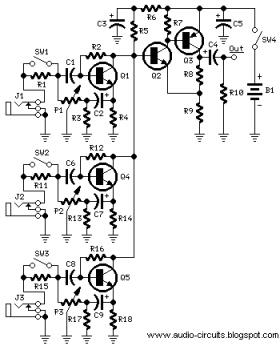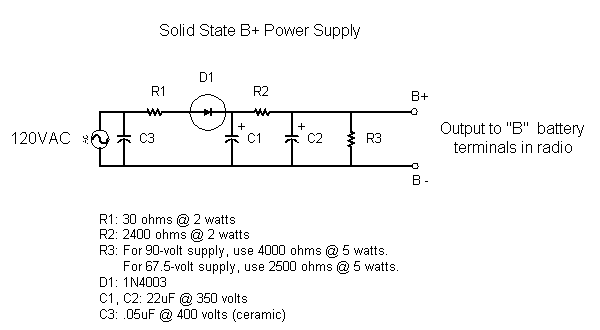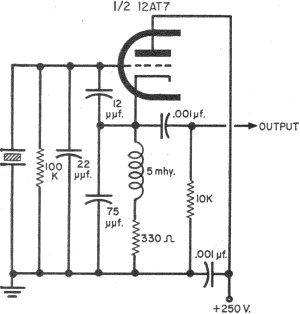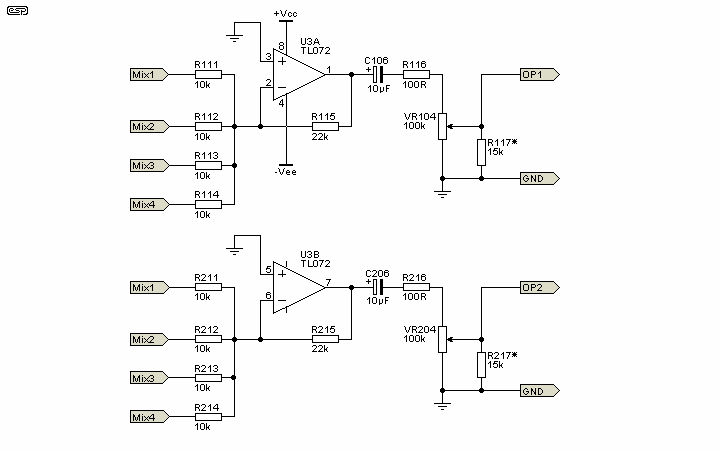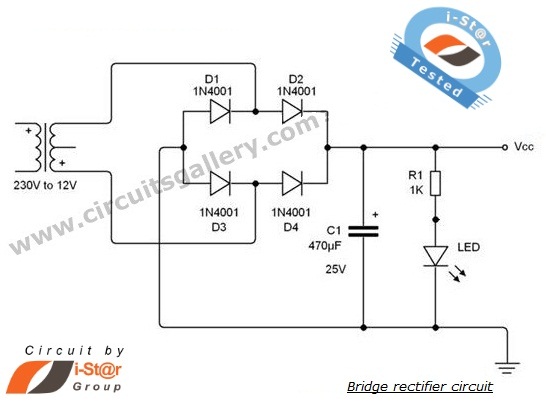
Radio Amplifiers Circuits
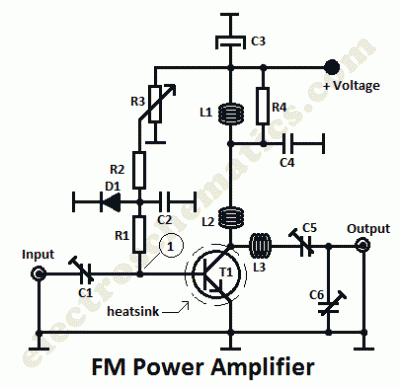
This is a 1 watt FM amplifier with a robust design that can be used to amplify an RF signal in the 88 to 108 MHz band. It is highly sensitive when utilizing quality RF power amplifier transistors, trimmers, and coils. The power amplification factor ranges from 9 to 12 dB (9 to 15 times). With an input power of 0.1W, the output will reach 1W. This amplifier operates on the 2-meter band at 144 MHz. Additionally, it is a push-pull RF amplifier constructed with DV28120T V-MOSFETs. Coils can be made from RG142 coaxial cable or similar materials, measuring 620 mm in length, 5 mm in diameter, consisting of 6 turns with an inside diameter of 30 mm, ensuring no gaps between turns. The 2-meter 144 MHz push-pull amplifier can generate up to 200W, producing clear audio with two DV28120T transistors. Furthermore, a 10-meter 27 MHz CW radio amplifier is equipped with the VN66AF transistor produced by Siliconix, which offers advantages such as low cost, excellent dielectric insulation, and high gain. The VN66AF is used as an RF amplifier for the 10-meter band (26 to 30 MHz), enabling small transmitters of approximately 200 mW to be effectively amplified. This FM radio amplifier for the 88-108 MHz range is equipped with a BLF 245 transistor and can utilize a heatsink from a processor along with a cooling fan. The BLF 245 datasheet is available for reference. Additionally, a wideband FM power amplifier designed with the MRF 171A MOSFET transistor provides an output RF power of approximately 40W, with a gain of 20 dB (100 times) based on the input RF power.
This FM amplifier circuit operates within the specified frequency range of 88 to 108 MHz, making it suitable for standard FM radio applications. The design utilizes high-performance components, including the DV28120T V-MOSFET transistors, which are known for their efficiency and reliability in RF amplification. The push-pull configuration enhances linearity and minimizes distortion, resulting in high-fidelity audio output.
The coil specifications are critical for achieving optimal performance. The use of RG142 coaxial cable for winding the coils ensures low loss and high-quality signal transmission. The dimensions and construction of the coils, with tightly wound turns and no gaps, are essential for maintaining the desired inductance and ensuring effective RF performance.
In addition to the 1W amplifier, the circuit can be scaled for higher power outputs, such as the 200W capability in the 144 MHz band, by using multiple DV28120T transistors in a push-pull arrangement. This scalability allows for versatility in applications ranging from low-power personal transmitters to higher-power broadcast systems.
The integration of the VN66AF transistor in the 27 MHz amplifier highlights the importance of selecting components that provide high gain and affordability. This transistor's characteristics make it a suitable choice for low-power applications, further demonstrating the circuit's adaptability.
The BLF 245 transistor is another key component, known for its robustness in high-power applications. The ability to use a processor heatsink and cooler ensures that the amplifier operates within safe thermal limits, crucial for maintaining performance and longevity.
Lastly, the inclusion of the MRF 171A MOSFET in the wideband FM power amplifier circuit exemplifies the design's capability to handle varying input power levels while delivering significant output power. With a gain of 20 dB, this amplifier can effectively boost weaker signals, making it suitable for a variety of RF applications. Overall, the described FM amplifier circuits are versatile, efficient, and capable of delivering high-quality RF amplification across multiple frequency bands.This is a 1 watt fm amplifier with a good design that can be used to amplify a rf signal in the 88 108 MHz band. It is very sensitive if you use good rf power amplifier transistors, trimmers and coils. It has a power amplification factor of 9 to 12 dB (9 to 15 times). At an input power of 0. 1W the output will be 1W. This is a 2 meters 144 Mhz rf amplifier wich works in push pull and is build with DV28120T Vmos. You can use coils made form RG142 coaxial cable or similar, 620mm long, 5mm diameter, 6 turns with inside diameter 30mm no gaps between. VMOS RF amplifier circuit. 2 meters 144MHz push pull amplifier wich can generate 200W, how does it sound Sounds delicious with 2 DV28120T transistors.
DV28120T push pull amplifier circuit. The 10 meters 27MHz CW radio amplifier is equiped with VN66AF transistor produced by Siliconix wich has some advantages: its cheap, great dielectric insulation and high gain. Here we use VN66AF as an rf amplifier for 10m band (26 30 MHz ). With this 27MHz rf amplifier, small transmitters ~ 200mW, can be transformed in. This fm 88-108 Mhz radio amplifier is equiped with BLF 245 and can be user with a heatsink from a processor and cooler.
The BLF 245 Datasheet can be downloaded over here -> blf245-datasheet BLF245 amplifier circuit. One wideband fm power amplifier designed with MRF 171A MosFet transistor. The output rf power is somewhere around 40W, the gains is 20dB ( 100 X ). The input rf power is. 🔗 External reference
This FM amplifier circuit operates within the specified frequency range of 88 to 108 MHz, making it suitable for standard FM radio applications. The design utilizes high-performance components, including the DV28120T V-MOSFET transistors, which are known for their efficiency and reliability in RF amplification. The push-pull configuration enhances linearity and minimizes distortion, resulting in high-fidelity audio output.
The coil specifications are critical for achieving optimal performance. The use of RG142 coaxial cable for winding the coils ensures low loss and high-quality signal transmission. The dimensions and construction of the coils, with tightly wound turns and no gaps, are essential for maintaining the desired inductance and ensuring effective RF performance.
In addition to the 1W amplifier, the circuit can be scaled for higher power outputs, such as the 200W capability in the 144 MHz band, by using multiple DV28120T transistors in a push-pull arrangement. This scalability allows for versatility in applications ranging from low-power personal transmitters to higher-power broadcast systems.
The integration of the VN66AF transistor in the 27 MHz amplifier highlights the importance of selecting components that provide high gain and affordability. This transistor's characteristics make it a suitable choice for low-power applications, further demonstrating the circuit's adaptability.
The BLF 245 transistor is another key component, known for its robustness in high-power applications. The ability to use a processor heatsink and cooler ensures that the amplifier operates within safe thermal limits, crucial for maintaining performance and longevity.
Lastly, the inclusion of the MRF 171A MOSFET in the wideband FM power amplifier circuit exemplifies the design's capability to handle varying input power levels while delivering significant output power. With a gain of 20 dB, this amplifier can effectively boost weaker signals, making it suitable for a variety of RF applications. Overall, the described FM amplifier circuits are versatile, efficient, and capable of delivering high-quality RF amplification across multiple frequency bands.This is a 1 watt fm amplifier with a good design that can be used to amplify a rf signal in the 88 108 MHz band. It is very sensitive if you use good rf power amplifier transistors, trimmers and coils. It has a power amplification factor of 9 to 12 dB (9 to 15 times). At an input power of 0. 1W the output will be 1W. This is a 2 meters 144 Mhz rf amplifier wich works in push pull and is build with DV28120T Vmos. You can use coils made form RG142 coaxial cable or similar, 620mm long, 5mm diameter, 6 turns with inside diameter 30mm no gaps between. VMOS RF amplifier circuit. 2 meters 144MHz push pull amplifier wich can generate 200W, how does it sound Sounds delicious with 2 DV28120T transistors.
DV28120T push pull amplifier circuit. The 10 meters 27MHz CW radio amplifier is equiped with VN66AF transistor produced by Siliconix wich has some advantages: its cheap, great dielectric insulation and high gain. Here we use VN66AF as an rf amplifier for 10m band (26 30 MHz ). With this 27MHz rf amplifier, small transmitters ~ 200mW, can be transformed in. This fm 88-108 Mhz radio amplifier is equiped with BLF 245 and can be user with a heatsink from a processor and cooler.
The BLF 245 Datasheet can be downloaded over here -> blf245-datasheet BLF245 amplifier circuit. One wideband fm power amplifier designed with MRF 171A MosFet transistor. The output rf power is somewhere around 40W, the gains is 20dB ( 100 X ). The input rf power is. 🔗 External reference
